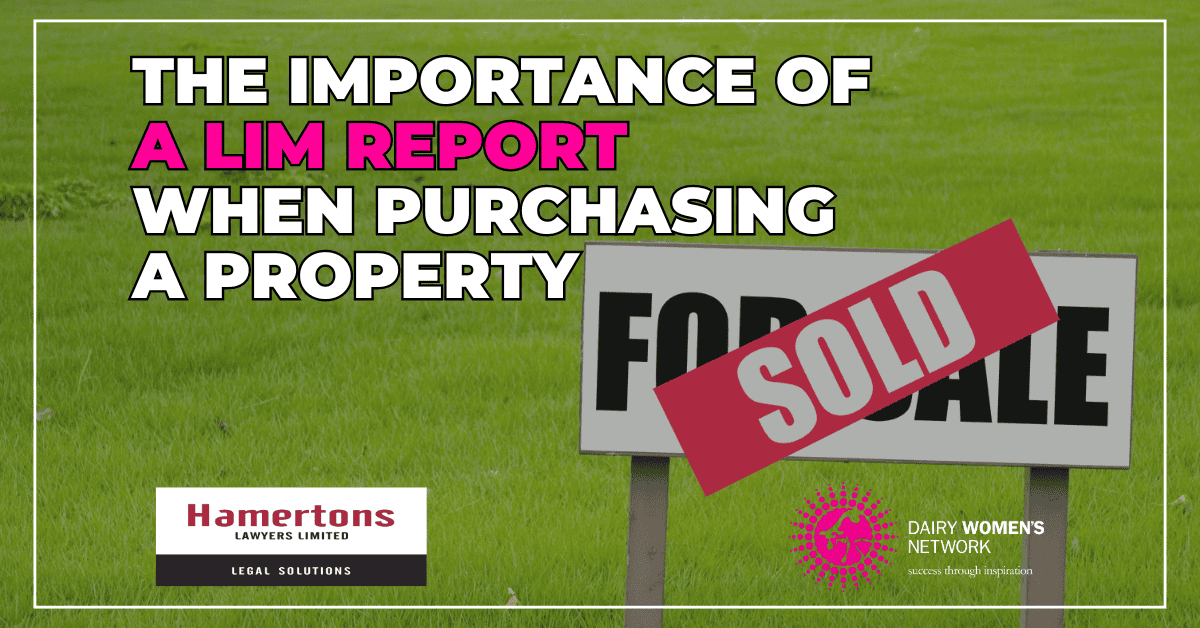News

THE IMPORTANCE OF A LIM REPORT WHEN PURCHASING A PROPERTY
Blog brought to you by

LIM Reports can be expensive, and when buying a property, it can often be easy to try to cut costs wherever possible. However, spending the money on a LIM Report may help you in the long run.
WHAT IS A LIM REPORT?
LIM Reports disclose information that the Local Council knows about the property and any issues that may affect the property such as the following:
• Information identifying any special features and characteristics of the land which includes erosion, slippage, inundation, avulsion, falling debris and subsidence;
• Information on the possible presence of hazardous contaminants which the council knows about and is not apparent from the district scheme or a district plan under the Resource Management Act;
• Information on private and public stormwater and sewage drains;
• Information relating to drinking water;
• Information relating to rates on the land;
• Information relating to any consent, certificate, notice, order or requisition affecting the land or any building on the land;
• Information notified to the territorial authority in relation to weathertight homes claims (applications for claims, decisions regarding whether the claim is or isn’t eligible, termination of a claim, signing of agreed terms of settlement and discontinuation or termination of a claim);
• If the land is subject to a levy order, the levy period, how liability for a levy on the land is assessed and the amount of any unpaid levy;
• If the land is in a project area and is subject to a targeted rates order and information relating to this; and
• Information relating to the authorized use of the land and any conditions on the use.
WHY SHOULD I OBTAIN A LIM REPORT?
LIM Reports can disclose issues on the land that you, as the Purchaser, may not be aware of, or wish to deal with. Under the ADLS Standard form agreement, a Purchaser can, on reasonable grounds, not approve the LIM. If the Purchaser does not approve the LIM Report, they will give notice to the Vendor asking that the issue be remedied by the Vendor. If the issue cannot be remedied or the Vendor does not agree to remedy the issue, then the Purchaser can cancel the Agreement.
This is particularly important if a Notice to Fix has been issued in respect of the property. These notices are sent by the Local Council in respect of non-consented works.
The Council will often require the owner to either;
• restore the works to their consented state;
• to obtain a certificate of acceptance; or
• to remove the work all together.
Until any of these things are done, a fine will accumulate, often a hefty fine. You as the Purchaser would assume the risk of paying the fine should Council choose to pursue the matter.
Previously submitted building replans are usually contained in a LIM Report. Unconsented works (which have not had a notice to fix issued) can be discovered via the LIM Report. This is important as much like a Notice to Fix, you as a Purchaser are assuming liability for that unconsented work. If the Council become aware of the problem, they could issue a Notice to Fix for which you would be liable to comply with.
Many issues with a property that can be discovered with a LIM Report can become insurance and finance issues. Insurers may not wish to insure unconsented works as the risk to them increases. If you are unable to obtain insurance the Bank will not provide lending. Further to this, unconsented works can affect the Banks security interest and may make them unwilling to lend. Best practice is to disclose this information to the Bank and the Insurer as soon as possible and gain their consent to insure despite the issues that have arisen, before you satisfy any conditions in your agreement.















